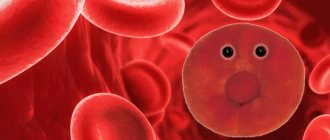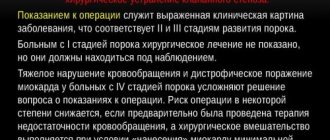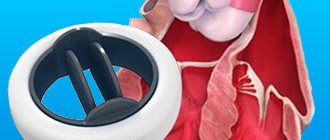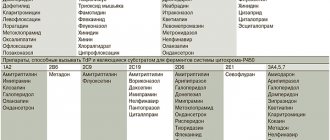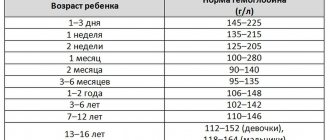Children often complain of chest pain, but it is rarely associated with heart disease or gastrointestinal tract inflammation or inflammation of the osteochondral joints. More often, chest pain in a child appears after physical activity and sports training, it is associated with muscle tension, sometimes due to psycho-emotional stress at home or at school, and is associated with the child’s internal anxiety.
If your child constantly complains of chest discomfort or pain for no apparent reason, consult a pediatrician to rule out serious diseases (heart, lungs, stomach, etc.).
URGENT CARE
Call an ambulance if your child:
- elevated temperature
- lethargy
- chest pain
- cough
- dry cough
- sudden shortness of breath appeared
- severe chest pain (suspicious pneumothorax)
THE DOCTOR'S CONSULTATION
Contact your doctor if your child complains of palpitations and difficulty breathing or persistent or very severe chest pain at rest.
ATTENTION!
If your child has persistent chest pain or gets worse with exercise, you should see a doctor. If chest pain appears after an injury, it is necessary to exclude a hip fracture, pneumothorax (collapsed lung), and other injuries to internal organs.
| ASK YOURSELF A QUESTION | POSSIBLE REASON | WHAT TO DO |
| Is the child physically active, plays sports, grows and develops normally, has a good appetite, is breathing normal? | Costochondritis (inflammation of the osteochondral joints of the ribs), muscle strain | If there is no improvement within 2-3 days, contact your pediatrician . Limit physical activity for a couple of days. |
| The child is healthy, he has difficulties with school and relationships with peers are tense, the atmosphere in the house is tense, chest pain appears at rest, lasts 1-2 minutes? | Nonspecific chest pain | Consult with your pediatrician ; a delicate and skillful approach will help identify psychological causes of pain and exclude organic causes of the disease. |
| The child suffered a viral infection, his temperature rose, and he developed a cough and weakness, increased breathing and wheezing | Pneumonia | It is necessary to call a pediatrician to choose treatment tactics |
| The child complains of a sour taste in the mouth and a burning sensation, grows and develops according to age, sometimes vomits, sometimes wakes up at night with pain in the chest or upper abdomen? | Diseases of the gastrointestinal tract | Raise the head of the bed to prevent acidic contents from the stomach from entering the esophagus. Avoid foods that cause heartburn (coffee, chocolate, tomatoes, etc.) Contact your pediatrician for an examination and examination. |
| Does your child have chest pain after physical activity, dizziness and blurred vision? Are there complaints of increased heart rate at rest, is the child pale or turns blue after physical activity? | Heart diseases | It is necessary to call a pediatrician to determine the causes |
| Is there swelling of the joints and their pain, chest pain at rest? | Juvenile rheumatoid arthritis | An examination by a pediatrician is required to determine the causes and consultation with specialists. |
FOR INFORMATION
Pneumothorax as a cause of chest pain
Collapse of the lung (or part of it) - pneumothorax - causes acute chest pain and sudden onset of shortness of breath. Spontaneous (sudden, without apparent cause) pneumothorax occurs in children, although it is most common in men 20-40 years old. Children with chronic lung diseases (for example, cystic fibrosis) are most prone to this, but pneumothorax occurs in healthy children, more often in thin teenage boys. Spontaneous pneumothorax occurs when the lung tissue ruptures, allowing air to leak from the lung into the pleural space. If this "leakage" occurs slowly, the baby will experience chest pain without other symptoms. In this case, the gap, as a rule, closes on its own, and the free air is absorbed. Otherwise, a large accumulation of air in the pleural part can lead to compression of the lung or part of it; In this case, severe chest pain, dry cough, and sudden shortness of breath occur. The child needs to be provided with peace and fresh air. Immediate medical attention is required.
Pediatrician appointment prices:
| TYPES OF MEDICAL SERVICES | Cost, rub. |
| Examination of a child by a pediatrician to obtain a certificate + certificate | 1950 |
| Visit of a pediatrician, consultation at home (Moscow) | 5400 |
| Consultation with a pediatrician at home for the second child | 1950 |
| Patronage for a newborn / gymnastics and swimming at home (1 session, pediatrician Kapina A.V.) | 6300 |
Chest pain when coughing
General information
Chest pain with coughing and inhalation or other respiratory movements usually points to the pleura and pericardium or mediastinum as a possible source of pain, although pain in the chest wall is probably also influenced by respiratory movements and has nothing to do with heart disease.
Most often, the pain is localized in the left or right side and can be either dull or sharp.
You may be interested in: Chest pain when inhaling Chest pain in children
The main causes of chest pain when coughing
Chest pain when coughing and inhaling occurs due to inflammation of the membrane lining the inside of the chest cavity and covering the lungs. Dry pleurisy can occur with various diseases, but most often with pneumonia .
Pain during dry pleurisy decreases when lying on the affected side. There is a noticeable limitation in the respiratory mobility of the corresponding half of the chest. Body temperature is often subfebrile, chills, night sweats, and weakness may be observed. Restriction of chest movement or chest pain when coughing , inhaling and exhaling with shallow breathing is observed with functional disorders of the costal frame or thoracic spine (limited mobility), pleural tumors, pericarditis. With dry pericarditis, chest pain increases with coughing, inhalation and movement, so the depth of breathing decreases, which worsens shortness of breath. The intensity of pain when inhaling varies from slight to severe. When the interpleural ligament is shortened, the following symptoms are observed:
- coughing, aggravated by talking, taking a deep breath, or physical activity;
- stabbing pain in the chest when coughing or running.
The interpleural ligament is formed from the fusion of the visceral and parietal layers of the pleura of the root of the lung. Further, descending caudally along the medial edge of the lungs, this ligament branches in the tendon part of the diaphragm and its legs. The function is to provide springy resistance during caudal displacement of the diaphragm.
In the presence of an inflammatory process, the ligaments shorten and limit caudal displacement. With intercostal neuralgia, acute “shooting” pain in the chest occurs along the intercostal space, sharply intensifying when coughing and inhaling. With renal colic, the pain is localized in the right hypochondrium and in the epigastric region and then spreads throughout the abdomen. The pain radiates under the right shoulder blade, to the right shoulder, intensifies when coughing and inhaling, as well as when palpating the gallbladder area.
Local pain is observed when pressing in the area of the X-XII thoracic vertebrae 2-3 transverse fingers to the right of the spinous islands. A blow or compression to the chest can cause rib fractures . With such damage, a person feels a sharp pain in the chest when coughing and inhaling.
Inflammation of the trachea
Chest pain when coughing and inhaling may also indicate the presence of osteochondrosis of the thoracic spine. Chest pain that occurs against the background of a cold (flu, ARVI) and is accompanied by a dry, obsessive cough, manifested by a scratching sensation behind the sternum, aggravated by coughing, is a sign of tracheitis, inflammation of the trachea (the breathing tube connecting the larynx to the bronchi).
Such sensations go away on their own along with the cold itself. In addition, with prolonged, frequent, “nasty” coughing, pain occurs in the lower parts of the chest, at the level of the lower ribs. It is due to the fact that coughing is carried out mainly due to contraction of the muscles of the diaphragm. Like any other muscle, the diaphragm gets tired after prolonged use and pain occurs with each sharp contraction. This pain also goes away after the cold and cough ends. With lung cancer, the nature of the pain is different: sharp, stabbing, girdling, aggravated by coughing and breathing. The pain can cover a certain area or half of the chest; it can radiate to the arms, neck, and abdomen. The pain becomes especially intense and excruciating when the tumor grows into the ribs and spine. Chest pain with pneumothorax is often unbearable, but sometimes it is moderate and, like other pleural pains, increases with coughing and movement. Sometimes spontaneous pneumothorax can occur even without pain. If you often experience chest pain when coughing, seek help from your family physician, neurologist or pulmonologist.
Pediatricians:
Avzalova Daria Evgenevna
Pediatrician, neonatologist
Experience: 17 years Reviews: 7
Call to home
Barzenok Tatyana Arsenyevna
Head of the pediatric department, pediatrician of the first category
Experience: 27 years Reviews: 17
Make an appointment Call at home
Belousova Elena Sergeevna
Pediatrician, nephrologist
Experience: 17 years Reviews: 14
Make an appointment Call at home
Bykov Mikhail Viktorovich
Pediatrician of the highest category, ultrasound diagnostics specialist, Candidate of Medical Sciences
Experience: 24 years Reviews: 3
Make an appointment Call at home
Kazakova Liliya Valentinovna
Pediatrician, neonatologist, head of the breastfeeding consultant service
Experience: 27 years Reviews: 31
Make an appointment Call at home
Sedova Maria Sergeevna
Pediatrician, allergist-immunologist
Experience: 19 years Reviews: 30
Make an appointment Call at home
Sergienko Tatyana Yakovlevna
Pediatrician, pediatrician on duty at the pediatric hotline
Experience: 38 years Reviews: 21
Make an appointment
Solving nine breastfeeding problems in the first month
1Academy of Breastfeeding Medicine Protocol Committee. ABM clinical protocol# 20: Engorgement. Breastfeed Med. 2009;4(2):111-113. - Protocol Committee of the Academy of Breastfeeding, “ABM Clinical Protocol No. 20: Breast engorgement.” Brestfeed Med (Breastfeeding Medicine). 2009;4(2):111-113.
2 Jacobs A et al. S3-guidelines for the treatment of inflammatory breast disease during the lactation period. Geburtshilfe und Frauenheilkunde. 2013;73(12):1202-1208. — Jacobs A. et al., “S-3 Guidelines for the Management of Inflammatory Breast Diseases During Breastfeeding.” Geburtshilfe und Frauenheilkünde. 2013;73(12):1202-1208.
3 Amir LH. Academy of Breastfeeding Medicine Protocol Committee. ABM clinical protocol# 4: Mastitis, revised March 2014. Breastfeed Med. 2014;9(5):239-243. — Amir L.H., Protocol Committee of the Academy of Breastfeeding, “AVM Clinical Protocol No. 4: Mastitis,” as amended March 2014. Brestfeed Med (Breastfeeding Medicine). 2014;9(5):239-243.
4 Kent JC et al. Principles for maintaining or increasing breast milk production. J Obstet, Gynecol, & Neonatal Nurs. 2012;41(1):114-121. —Kent J.S. et al., “Principles of Maintaining and Increasing Milk Production.” F Obstet Ginecol Neonetal Nurse. 2012;41(1):114-121.
5 Amir L. Breastfeeding managing 'supply' difficulties. Aust fam physician. 2006;35(9):686. — — Amir L., “Breastfeeding: problems of “supply.” Aust fam physics. 2006;35(9):686.
6 Trimeloni L, Spencer J. Diagnosis and management of breast milk oversupply. Journal Am Board Fam Med. 2016;29(1):139-142. — Trimeloni L., Spencer J., “Diagnosis and correction of excess breast milk production.” Journal Am Board Fam Med. 2016;29(1):139-142.
7 Berens P et al. Academy of Breastfeeding Medicine. ABM Clinical Protocol# 26: Persistent pain with breastfeeding. Breastfeed Med. 2016;11(2):46-53. — Behrens P. et al., Academy of Breastfeeding Medicine, “ABM Clinical Protocol No. 26: Persistence of Breastfeeding Pain.” Brestfeed Med (Breastfeeding Medicine). 2016;11(2):46-53.
8 Australian Breastfeeding Association [Internet] White spot nipple; March 2015. — Australian Breastfeeding Association [Online], “White Spots on Nipples,” March 2015 [visited 02/08/2018].
Predisposing factors
The development of tracheitis is promoted by:
- general hypothermia;
- decreased immunity;
- lack of vitamins;
- rickets in a child;
- impaired nasal breathing (with chronic runny nose, severe curvature of the nasal septum, adenoids);
- tendency to allergic reactions;
- long-term use of inhalers with glucocorticosteroids (hormonal anti-inflammatory drugs), which is sometimes necessary in the treatment of bronchial asthma;
- living in an area with unfavorable environmental conditions;
- presence of a smoker in the family.
All this does not cause clinically significant inflammation of the tracheal wall, but disrupts its barrier function and facilitates the penetration of pathogens.
Treatment of tracheitis in children
Treatment of tracheitis in a child should be carried out under the supervision of a pediatrician. In severe cases, you may need the help of a pulmonologist - a doctor who treats diseases of the lungs and respiratory tract. Treatment of tracheitis includes medicinal and non-medicinal methods, the right combination of which can alleviate the child’s condition and cope with cough.
Medication methods
- To influence the infectious cause of the disease, antibacterial, antiviral or antifungal agents are prescribed. But with mild tracheitis, the doctor may decide to treat without the use of such drugs. In this case, the child will be under constant observation; if the condition worsens, the therapy will be adjusted.
- The main efforts in the treatment of tracheitis are aimed at relieving cough. For this, the child is prescribed mucolytics, which help thin and remove mucus. Antitussives for tracheitis are indicated in cases of debilitating cough. They are used strictly as prescribed by a doctor.
- When treating a child, cough remedies containing extracts of medicinal plants with mucolytic, expectorant and anti-inflammatory effects are also widely used. The components included in the composition complement and enhance each other's action. For example, Doctor MOM® cough syrup contains 10 carefully selected medicinal plant extracts. It helps to liquefy and remove mucus during tracheitis, and has an anti-inflammatory effect. Doctor MOM® cough syrup can be used to treat children from 3 years of age.
Non-drug methods
In addition to drug therapy for tracheitis, various physical procedures are used, a special massage to facilitate the discharge of sputum when coughing - all according to the doctor’s indications. It is important to remember that timely initiation of comprehensive treatment and compliance with the recommendations of a specialist is the key to successfully ridding a child of tracheitis. Self-medication of cough is fraught with the development of complications and a protracted course of the disease.
Types of tracheitis
There are several classifications of this disease:
- according to duration, tracheitis is divided into acute and chronic, the latter most often occurs with periods of exacerbation and remission;
- according to its etiology (reason), it can be infectious or non-infectious;
- Based on the nature of changes in the mucous membrane, they distinguish between catarrhal (when the surface layer of the mucous membrane becomes inflamed), hyperplastic (when the mucous membrane becomes inflamed and thickens) and atrophic tracheitis (when the mucous membrane becomes thinner and loses a significant number of cells capable of performing its functions).
The approach to its treatment depends on the type of disease.
What else can cause tracheitis?
Tracheitis in a child can also be non-infectious in nature. Its appearance is sometimes provoked by foreign bodies in the respiratory tract and medical manipulations during anesthesia affecting the trachea. A common cause of tracheitis is the child inhaling icy or dry hot air, chemically active fumes (from household and industrial chemicals, reagents, paints and varnishes). Continued contact with irritating aggressive substances maintains chronic inflammation. Another possible cause of non-infectious tracheitis in a child is allergies. Inhalation of an allergen triggers a hypersensitivity reaction, which leads to swelling of the mucous membrane of the larynx, trachea and bronchi.
